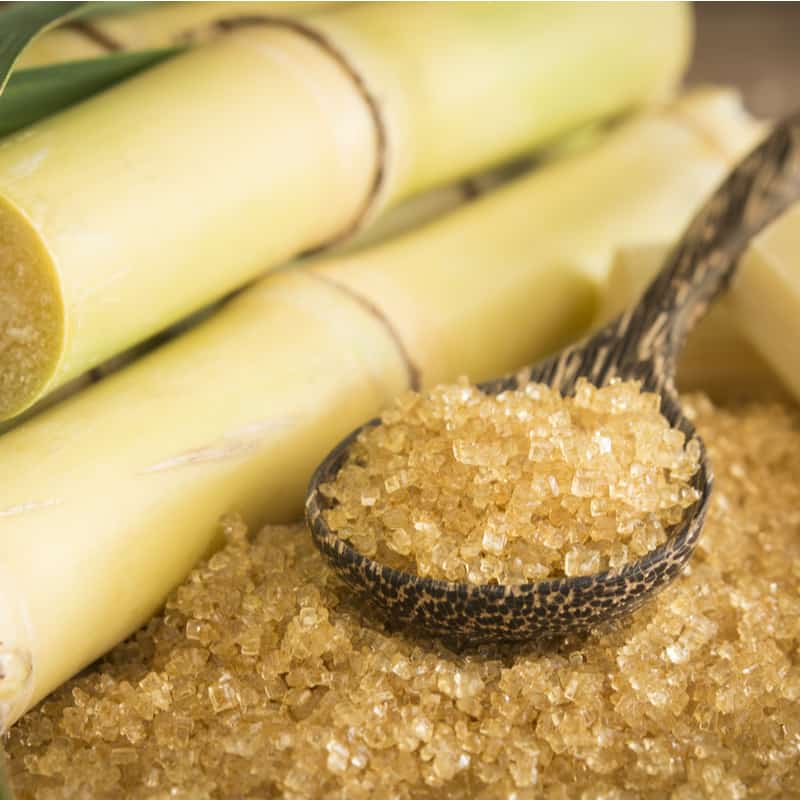This Dr. Axe content is medically reviewed or fact checked to ensure factually accurate information.
With strict editorial sourcing guidelines, we only link to academic research institutions, reputable media sites and, when research is available, medically peer-reviewed studies. Note that the numbers in parentheses (1, 2, etc.) are clickable links to these studies.
The information in our articles is NOT intended to replace a one-on-one relationship with a qualified health care professional and is not intended as medical advice.
This article is based on scientific evidence, written by experts and fact checked by our trained editorial staff. Note that the numbers in parentheses (1, 2, etc.) are clickable links to medically peer-reviewed studies.
Our team includes licensed nutritionists and dietitians, certified health education specialists, as well as certified strength and conditioning specialists, personal trainers and corrective exercise specialists. Our team aims to be not only thorough with its research, but also objective and unbiased.
The information in our articles is NOT intended to replace a one-on-one relationship with a qualified health care professional and is not intended as medical advice.
What Is Windburn? Symptoms, Treatment & How to Prevent It
March 24, 2022

If you’ve spent time in windy conditions recently and now have red, chafed and dry skin, windburn is likely to blame. Harsh conditions outdoors can strip your skin of oils, cause inflammation, and leave your skin looking and feeling irritated.
Your skin’s epidermis, the outermost layer that contains lipids (oils), acts as a protective barrier to keep your skin hydrated and healthy. However, a number of things can cause damage to your epidermis, including exposure to wind, freezing temperatures and, of course, too much sun.
How can you treat a burn caused by too much wind? Let’s look below at tips suggested by dermatologists to prevent and treat windburn.
What Is Windburn?
Windburn is a skin condition characterized by red, inflamed skin that’s been damaged by wind. It develops when skin is exposed to strong winds, usually in combination with cold temperatures, low humidity and sometimes also sunlight.
There are several ways in which strong winds can damage skin, including by:
- Stripping oils from the top layer of your skin, preventing it from staying moisturized
- Dehydrating/drying skin
- Causing blood vessels in the skin to dilate
Windburn vs. Sunburn
Is windburn worse than sunburn? It’s not necessarily worse, but it can lead to similar symptoms.
Sunburns are actually usually worse because they can cause long-term damage, while windburn tends to be temporary.
A sunburn is caused by too many UV rays being exposed to the skin, leading to changes in skin cells, damage to skin, discoloration and often dryness. Of course, sunburns can also increase the risk for developing skin cancer if they happen frequently.
These two skin issues can occur at the same time if someone is outdoors in both windy and sunny conditions — for example, if skiing on a cold, sunny day. Keep in mind that it’s possible to get a sunburn even with some cloud coverage in the sky.
Additionally, having windburned skin can actually make sunburns worse, since wind causes irritation and damage to the skin that makes it more susceptible to sunburns.
How can you tell the difference between these two types of burns? One dermatologist explained to Self magazine: “While sunburned skin feels hot and swollen, windburned skin feels prickly and chafed.”
Symptoms and Causes
Windburn can cause symptoms to skin including:
- Redness
- Dryness
- Scaling, flaking and peeling
- Itchiness
- Burning sensations and sensitivity
Most often, windburn affects the skin on your face, especially the middle part of your face and parts that protrude outward, such as your nose and cheeks. You can develop it other places too, including your chin, chest and forehead.
You’re more likely to experience noticeable or severe windburn symptoms if you already tend to have sensitive skin, for example if you burn easily in the sun.
What Causes Windburn?
Any activity that you do outdoors in the wind can cause windburn, including working out outside in the cold during the winter. Causes of windburn can include:
- Skiing and snowboarding
- Running outdoors
- Cycling/biking outside
- Motorcycling
- Using a quad on the snow
- Boating or jet skiing
Skiing is probably one of the most common activities that causes windburn, since it involves lots of time outside in cold conditions, while also facing wind resistance. Activities in which you’re moving at faster speeds, and therefore have more wind resistance hitting your face, are most likely to cause the worst windburn symptoms.
How to Treat
Windburn treatment involves soothing irritated skin and preventing further inflammation and dryness.
How long does it take for windburn to go away? In most cases symptoms should improve within a few days, assuming you don’t have severe damage to your skin.
Here are ways to help treat windburn and support your skin’s healing process:
1. Moisturize Your Skin with Natural/Gentle Products
This is probably the most important step: Always use a moisturizer that helps hydrate dry skin. In cold temps and when heading outdoors, opt for heavier and hydrating skin care products that contain ingredients including ceramides, which help replenish oils that moisturize skin.
When choosing a moisturizer to help prevent windburn, some of the best ingredients to look for include:
- Humectants, such as glycerin and hyaluronic acid, that draw water into your skin
- Aloe vera and oatmeal, which soothe irritation, plus cucumber slices around the eye area
- Thicker creams made with cocoa butter and/or shea butter
- Petrolatum (petroleum jelly), which can be applied over lighter ingredients to form a protective barrier on the skin
If you’ve been using the products above for several days but aren’t noticing any improvements, try applying a bit of hydrocortisone, which can help lower inflammation and reduce itching and redness.
Look for a cream made with 1% hydrocortisone, and apply it twice daily for several days. If you still don’t see improvements it’s best to give your doctor a call, especially if you have sensitive skin in general and suffer from another issue that causes redness or dryness, like dermatitis, rosacea or eczema.
2. Skip Irritating, Drying Skin Care Products
If your skin is already dry and aggravated, the last thing you want to do is worsen the situation by applying harsh ingredients to it. These may make your skin even more dry, which will delay the healing process.
Don’t use any skin care products or makeup that contain:
- Alcohol
- Fragrances
- Exfoliants (including facial acids like salicylic acid, benzoyl peroxide, AHAs or PHAs, until the burn goes away — these can all be beneficial once your skin is in good health, however they can be too trying for sensitive skin or damaged skin)
- Microdermabrasion or chemical peels
- Retinol/retinoids (similar to facial acids, save these for skin that has recovered from any burns)
3. Avoid Scratching or Peeling Dry Skin
Allow your skin to heal by keeping it clean and hydrated, and then keep your hands off.
Don’t attempt to use scrubs on very dry or peeling skin, pick or peel, or rush the process. Simply leave your skin alone while it recovers — this way you avoid causing scabbing, bleeding, scarring or discoloration/hyperpigmentation.
Once your skin has mostly healed, you can apply a serum with antioxidants, such as vitamin C, to help it repair and prevent discoloration.
4. Don’t Forget to Protect Your Lips
Your lips are also prone to becoming chapped, red and dry when they’re in the wind and sun. Apply a chapstick or lip balm — ideally one made with a mineral SPF/zinc oxide plus ingredients like beeswax and cocoa butter — before heading outdoors, and then apply more about every hour to prevent dry lips and cold sores.
How to Prevent
One of the best things you can do for your skin is to keep it moisturized and protected both before and after spending time outdoors in the wind and sun.
Here are tips for preventing windburn, plus other forms of skin damage and irritation, too:
- Apply moisturizer before heading into cold, windy conditions.
- Cover up skin with a cloth face/ski mask, scarf or goggles if the conditions are very windy or cold.
- Protect yourself from sunburns too by wearing SPF and sunglasses and limiting the time you spend in direct sunlight.
- Keep skin hydrated with a humidifier, which helps stop skin from losing moisture due to dry air indoors.
- Drink lots of water to hydrate your skin from the inside.
- Don’t over-wash your skin, and be careful about exposing it to too much heat in the shower, which can zap moisture and contribute to dryness.
- Wash over makeup/cosmetics every night before bed, since these can cause skin reactions that worsen inflammation.
Conclusion
- Windburn is a type of skin condition caused by damage to the outermost layer of your skin, called your epidermis.
- The epidermis usually acts as a protective barrier for the skin, but too much wind can strip it if oils, dilate blood vessels, and lead to dryness and inflammation.
- The No. 1 cause is doing any activity outdoors in the wind, cold and sun, such as skiing, motorcycling, running, etc.
- Windburn treatment and prevention tips include using soothing moisturizers to keep skin hydrated, covering up your skin before going outdoors, applying chapstick and SPF, wearing goggles, and avoiding using irritating products.









